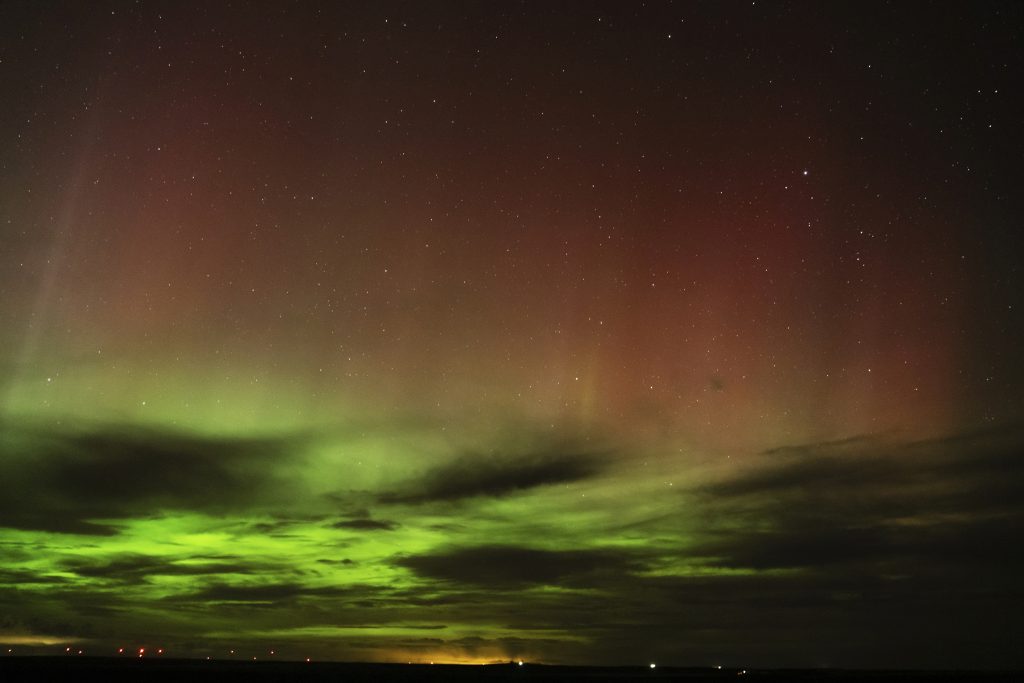
Tonight could offer a rare and stunning display of the Northern Lights, or Aurora Borealis, visible across several parts of the U.S. due to a severe geomagnetic storm forecasted by the National Oceanic and Atmospheric Administration (NOAA). This storm, rated G4 on a scale from G1 (minor) to G5 (extreme), is the result of a coronal mass ejection (CME) that occurred earlier this week. As the CME reaches Earth, it’s expected to generate strong auroras visible much farther south than usual.
Where and When to Watch
The aurora could be visible in regions stretching across the northern U.S., including states such as Michigan, Illinois, and even as far south as Alabama, depending on the storm’s intensity. The best viewing times will be between 10 p.m. and 2 a.m. local time, with peak activity likely around midnight. This geomagnetic event is comparable to a G5 storm that occurred in May 2024, which treated viewers in similarly unexpected areas to a brilliant light show.
Cities like Chicago are expected to have good viewing conditions if skies remain clear. Experts advise seeking out dark, open spaces away from city lights for the best experience. Cameras, especially smartphone cameras, may capture colors invisible to the naked eye, so be sure to have one on hand if the aurora is visible but faint (Spectrum Local News) (WTTW News).
What Causes the Northern Lights?
Auroras occur when energized particles from the sun collide with Earth’s atmosphere. These particles, guided by the planet’s magnetic field, interact with oxygen and nitrogen atoms high in the atmosphere, producing a brilliant light display. The colors of the aurora vary depending on the type of atom involved—green is typically associated with oxygen, while blues and purples come from nitrogen.
This surge in solar activity is part of the sun’s 11-year solar cycle, which will peak in 2025. As the sun approaches this peak, solar storms like the one tonight are becoming more frequent. These storms can also have more tangible impacts, such as disruptions to satellites and power grids, though most effects are harmless (Spectrum Local News) (WTTW News).
Viewing Tips
- Check Local Weather: Clear skies are essential for aurora viewing, so be sure to check local weather conditions before heading out.
- Avoid Light Pollution: To see the aurora in all its glory, find a location away from city lights and other light pollution.
- Be Patient: The exact timing of auroras can be unpredictable. Peak activity often occurs close to midnight, but the display may begin earlier or continue late into the night.
- Use a Camera: Even if the aurora appears faint to the naked eye, cameras are more sensitive to light and may capture stunning colors.
Keep an eye on updates from the Space Weather Prediction Center, as the timing and strength of auroras can shift based on real-time conditions. Whether you’re an avid aurora chaser or experiencing it for the first time, tonight’s event promises to be a memorable opportunity to witness one of nature’s most awe-inspiring phenomena (Spectrum Local News) (WTTW News).
